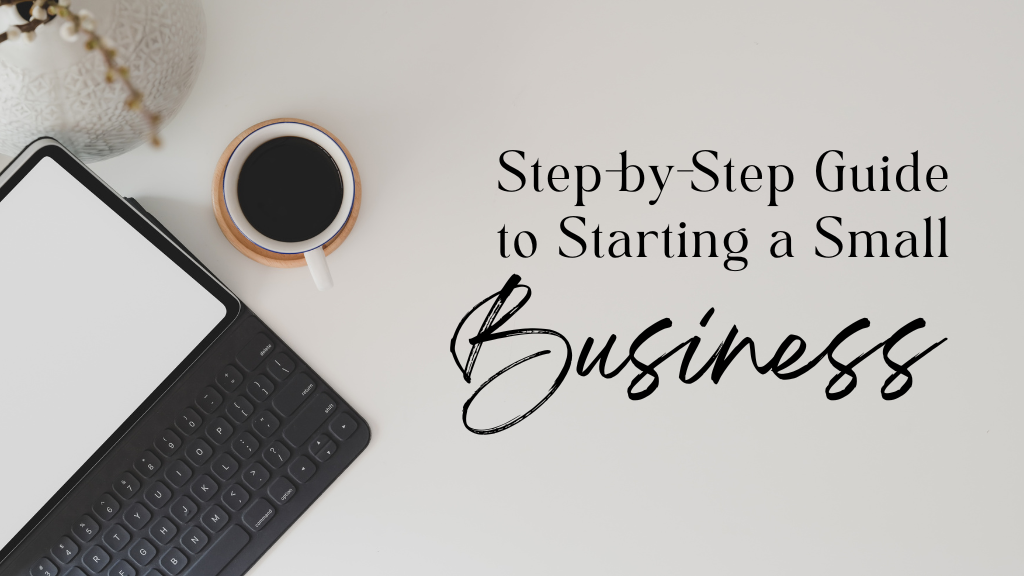
Starting a small business is a daunting task, but with careful planning and execution, it can be an exciting and rewarding endeavour. The journey from ideation to launch may seem overwhelming, but breaking down the process into manageable steps can make it much easier. In this guide, we’ll provide you with a step-by-step approach to starting your own small business.
Step 1: Determine your business idea and conduct market research
The first step to starting a small business is to determine your business idea. What product or service will you offer? Is there a demand for it? Will it be profitable? Conducting market research can help answer these questions. Market research involves analyzing industry trends, identifying target customers, and evaluating the competition. This information will help you understand the feasibility of your business idea and create a solid business plan.
Step 2: Write a business plan
A business plan is a roadmap that outlines your business objectives, strategies, and financial projections. It serves as a tool to communicate your vision to potential investors, partners, and lenders. Your business plan should include the following:
- Executive summary: A brief overview of your business idea, mission statement, and objectives.
- Market analysis: A detailed analysis of your target market, competition, and industry trends.
- Marketing and sales strategies: A plan for reaching your target customers and promoting your products or services.
- Financial projections: A detailed financial plan, including cash flow projections, income statements, and balance sheets.
- The management team and organizational structure: A description of your management team and organizational structure.
Step 3: Choose a business structure
Your business structure will determine the legal and tax implications of your business. The most common business structures are sole proprietorship, partnership, limited liability company (LLC), and corporation. Each structure has its advantages and disadvantages, so it’s essential to consult with a lawyer or accountant to determine the best option for your business.
Step 4: Register your business
Once you’ve decided on a business structure, you’ll need to register your business with the appropriate government agency. The registration process varies by state but typically involves filing the necessary paperwork and paying a registration fee. You’ll also need to obtain any necessary permits or licenses to operate your business legally.
Step 5: Secure funding
Starting a small business requires capital. You’ll need funds to cover start-up costs, such as equipment, inventory, and office space. There are several ways to secure funding for your business, including:
- Self-funding: Using your own savings or assets to finance your business.
- Loans: Obtaining a loan from a bank or financial institution.
- Crowdfunding: Raising funds from a large number of people through online platforms.
- Investors: Find investors who are willing to invest in your business in exchange for equity.
Step 6: Set up your business location
Whether you’re running your business from home or renting a commercial space, setting up your business location is a crucial step. You’ll need to create a comfortable and functional workspace that meets the needs of your business. This may include purchasing equipment, setting up a website, and hiring staff.
Step 7: Hire employees
If your business requires additional staff, you’ll need to hire employees. This involves creating job descriptions, advertising job openings, interviewing candidates, and conducting background checks. You’ll also need to comply with employment laws and regulations, such as minimum wage and overtime laws.
Step 8: Establish your brand
Establishing your brand is essential for creating a recognizable and memorable identity for your business. This includes creating a logo, choosing a color scheme, and developing a brand voice. Your brand should be consistent across all marketing materials, such as your website, social media, and print materials
Conclusion
Starting a small business is a challenging yet rewarding endeavour. By following these steps and carefully planning your business, you can increase your chances of success. Remember to conduct thorough market research, write a solid business plan, choose the appropriate business structure, and secure funding. Additionally, setting up a functional workspace, hiring employees, and establishing your brand is essential to creating a successful business. With dedication and hard work, you can turn your business idea into a reality. Good luck!



